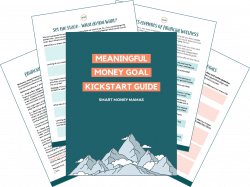Many homeowners view home improvement projects as investments in the long-term value of their homes. I certainly thought that would be the case when we bought our first home! But further research and discussion with our real estate agent led us to find out that most home improvement projects only earn back 60%-70% of the cost of putting them in.
So, are home improvements worth it? Ask yourself these questions to make the best decision for your family!
Table of Contents
7 Questions to Ask Before Doing a Home Improvement Project
1 – Why Are You Doing This Project? Is it For Your Benefit or to Make a Return on Investment?
If the home improvement you are looking to make is strictly for your family’s benefit and you are comfortable with the cost, more power to you! Just make sure you’ve budgeted for it without taking it out of what would otherwise be savings/investment dollars
While you certainly wouldn’t want to do anything that could hurt the value of your home if you plan to sell soon, if you are sticking around, make yourself happy.
Now, if you can’t afford a home improvement without taking out a loan or taking from money you would otherwise save, you need to be realistic about the return on your home improvement “investment”. In most cases, these improvements are money losing ventures.
Think through the rest of these questions to make an informed decision before you call the contractor. (Who will almost certainly try to convince you it is worth it…)
2 – Are These Improvements Really Improvements or Are They Maintenance Projects?
When people are buying a new home, they generally aren’t willing to pay extra for things working the way they should. If your boiler, AC unit, or septic system has a problem, you have to fix it, no questions asked. If you don’t, it will come up in inspection anyway and the buyer will likely ask for a price reduction to offset the cost of fixing it.
These maintenance costs are known as “invisible improvements” and while you may get some value back, you’ll be taking on the worst depreciation years for the next buyer. We had to do it for our AC units in our first year, and it stunk, but that is part of home ownership!
For visible improvements, continue on through the checklist to help you make your decision!
3 – When Are You Planning to Sell?
If you are selling your home in the next year or two, there are very few large home improvements that are worth the cost. In those cases, smaller investments like fresh paint in main rooms and trim, a new garage door, new steel front door, or minor kitchen remodels have the best return.
For those smaller improvements, you can expect to recoup about 80% of the cost. However, that 80% doesn’t include that those little touch ups may also make your home sell faster. And that saves you money as well.
Larger investments, like things that add square footage to your home, are generally viewed to be more for your family’s enjoyment of the home. If an extra bedroom or a finished basement would make you stay in your house longer, the cost could be worth it to save on the transaction costs of buying and selling a home. The years you get out of the improvement may offset the 30%+ of the original cost that you probably won’t get back in home value.
If your home improvement is in line with your timeline for staying in your home, continue on!
4 – Is Your Home Improvement Project In Line with the Rest of Your Home?
You may be dying for a luxury master bathroom, but if the rest of your house is solidly mid-range, the bathroom is just going to seem out of place for prospective buyers. And if the rest of your house hasn’t been updated in 20 years, it is just going to look older in comparison to your new bathroom.
Note on luxury improvements: Unless you are in a very high-end home, luxury improvements do not typically have the return of more mid-range ones. If someone is looking to buy an entry or mid-range home, they don’t want to be paying for ultra-high-end upgrades. In those cases, you may only get 40% of your cost back in home value.
5 – Is Your Project In Line with Your Neighborhood’s Market?
Alright, so your home investment is appropriate for your expected time in the home and with the style of your house. But does it fit in with your neighborhood? The last thing you want to do is make a series of expensive home improvements only to price yourself out of your neighborhood.
Take a look at the houses in your neighborhood and any recent sales in your area. What is the cost per square foot and how would your house compare after your home improvement project? If every house in your neighborhood is a 30-year-old, 3 bedroom, 2 bath; buyers aren’t likely to pay full value for an extra bedroom or brand new kitchen.
This leads us to our next consideration, different isn’t better.
6 – How Customized is Your Improvement? Does it Have Broad Appeal?
My mom is one of those unique people that loves quirky homes. A slightly odd layout, an interesting architectural feature, or a funky stained glass window and she’s sold. I think she has told me her new home has its original doorknobs at least five times. But unfortunately for those looking to make non-standard home improvements, her tastes usually means she gets to buy homes for below market prices because they’ve been on the market for a long time.
When it comes to homes, different isn’t better. If you find yourself thinking through an improvement and saying, “Why doesn’t every home have this?! I’ve never seen a house with this feature!” you’re probably looking at a project with low overall payback.
There is a reason developers keep building cookie cutter homes in communities of houses that all look about the same. They have broad appeal, sell for the best prices, and people like them! Be sure a home improvement is for your benefit, and that you are ready for any consequences in value if you have to sell, before making your home too unique.
Note on pools:
If you love pools, like my husband, you may think pools have broad appeal. They don’t. A realtor once told me that adding a pool cuts your potential buyer list in half, which may actually reduce your property value. While pools are fun, they are also expensive to maintain, risky for families with young kids, and in areas like New England only usable a few months out of the year. Don’t expect a new pool to add value to your home. Especially an above ground one.
7 – Are You Comfortable with the Expected Return on the Cost of Your Home Improvement Project?
While nothing beats speaking to a well respected local real estate agent, especially if you plan on moving soon, there are resources available to give you a general idea of how financially beneficial different projects are. Remodeling Online has annual reports for determining the expected range of return on various home improvement projects based on your region.
For instance, their 2020 report for Boston shows that, in a mid-range home, we could expect to recoup 47% of the cost of adding a backup power generator. Alternatively, we could expect to get ~84% of the cost back in our home value for replacing the front door with a new steel door.
A Home Improvement Project Needs to Work for You
You’re the one who has to live in your home and you’re the only one who can determine whether a home improvement project will make you happy. But be sure to go into any project with your eyes wide open.
Outside of incredibly hot real estate markets, like San Francisco, most improvements won’t receive their full value back in your home price. Make sure you are comfortable with the lost monetary value of your projects. If you’re undertaking the improvements for yourself, not for some perceived higher home value, the extra enjoyment from your home may be worth the price!
How do you view home improvements? What improvements are you willing to make for your family’s happiness, despite the potential cost? Drop a note in the comments and share your experiences with home ownership!





Fads go in and out of style, so if you don’t plan on selling soon the home improvement is just for you! It’s fine to make changes to suit your family’s needs, but realize that home improvements aren’t always the great investment that HGTV would lead you to believe.
We moved into our home a year ago and recently debated whether we simply re-roof (needed!) or re-roof + bump out the roof a bit to make the room upstairs bigger (not needed… improvement). Currently, we are leaning towards just re-roofing for the necessary maintenance and saving/investing our money. The additional space upstairs would be great, but ultimately, it is a luxury right now (not a necessity).
Do it yourself! As long as you can make a presentable project you can cut a ton of cost out of the project plus you get to buy new power tools still come in under budget. ?
You create the additional value and avoid going out to eat, buying the latest gadget ,etc. You also get the pride of “I built that” when people ask who did it!
It’s funny how my approach has changed over time. When younger, thought fixer-uppers were fine. Until we realized that other than yard work or painting, we’d be hiring out thanks to being very NOT mechanically inclined. If we ever move again, it’ll be a turn-key house because it is tiring living with in a house where everything needs updating and waiting for money to come in to do so, esp. with labor costs around here.
That being said, we did finally take out a HELOC (for cushion) to update the bathrooms. Why? We had 3 bathrooms (original to 1960s). Only 1 worked, and that one was moldy and gross. Now we have 3 working (non-moldy) baths.
It’s really helpful to write down as much information about the improvements before we begin (e.g., cost, benefit(s), expected outcomes, maintenance as a result of improvements, drawbacks, time spent on the improvements and time spent on enjoying the outcome of the improvements). This can help us justify things and assist in the decision making process. And you’re right some are invisible like the A/C example, but it still derives huge benefits for yourself and potential buyers of course.
I try to visualize a potential home improvement project and just let it simmer for a bit in my mind. I think about things like how often will it benefit me, how will it benefit me, how long will it last, how much maintenance will it require, will the maintenance incur additional expense. will it be functional and other questions? If most of the answers them yield favorable responses, then it can be a go 🙂